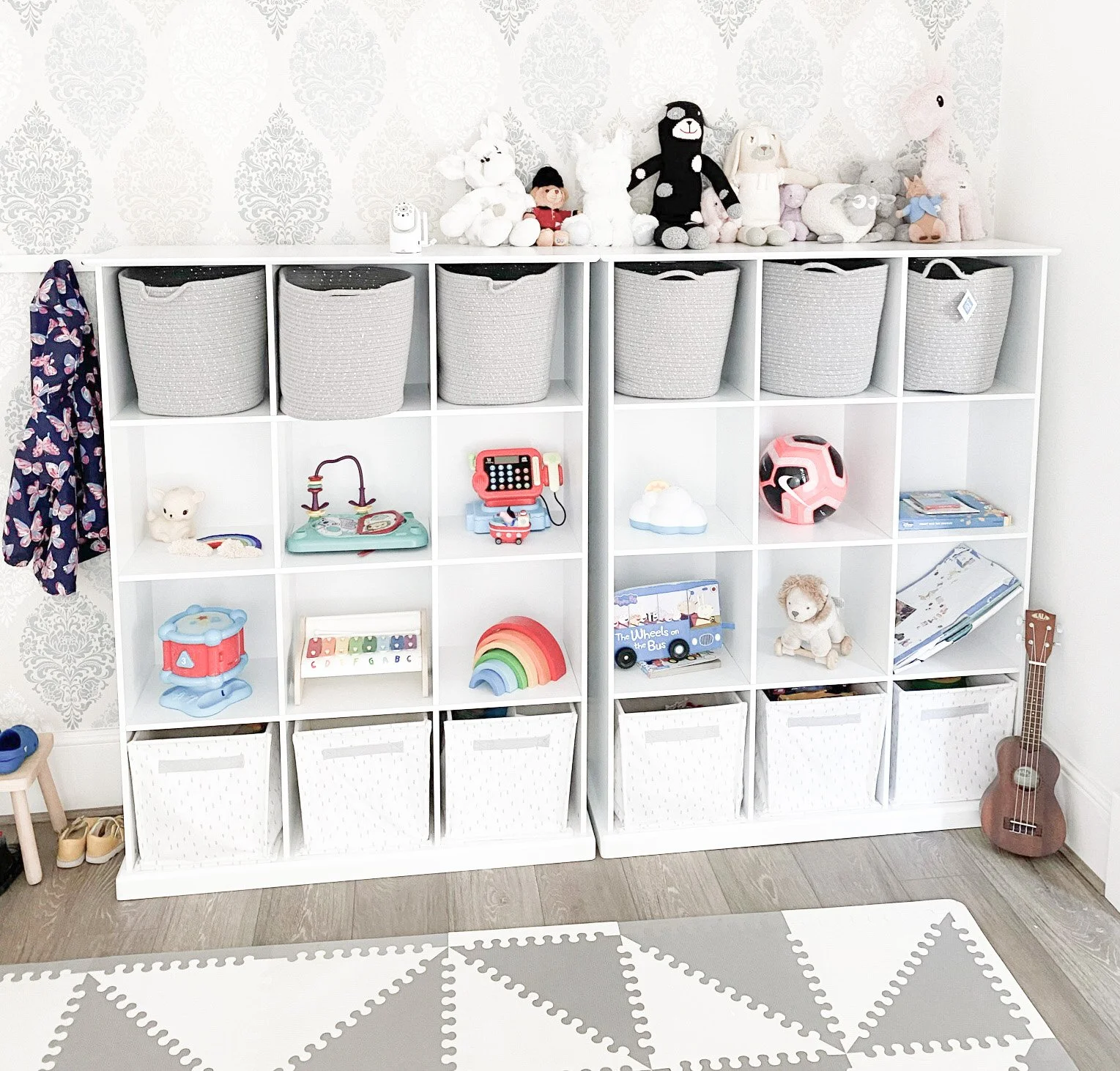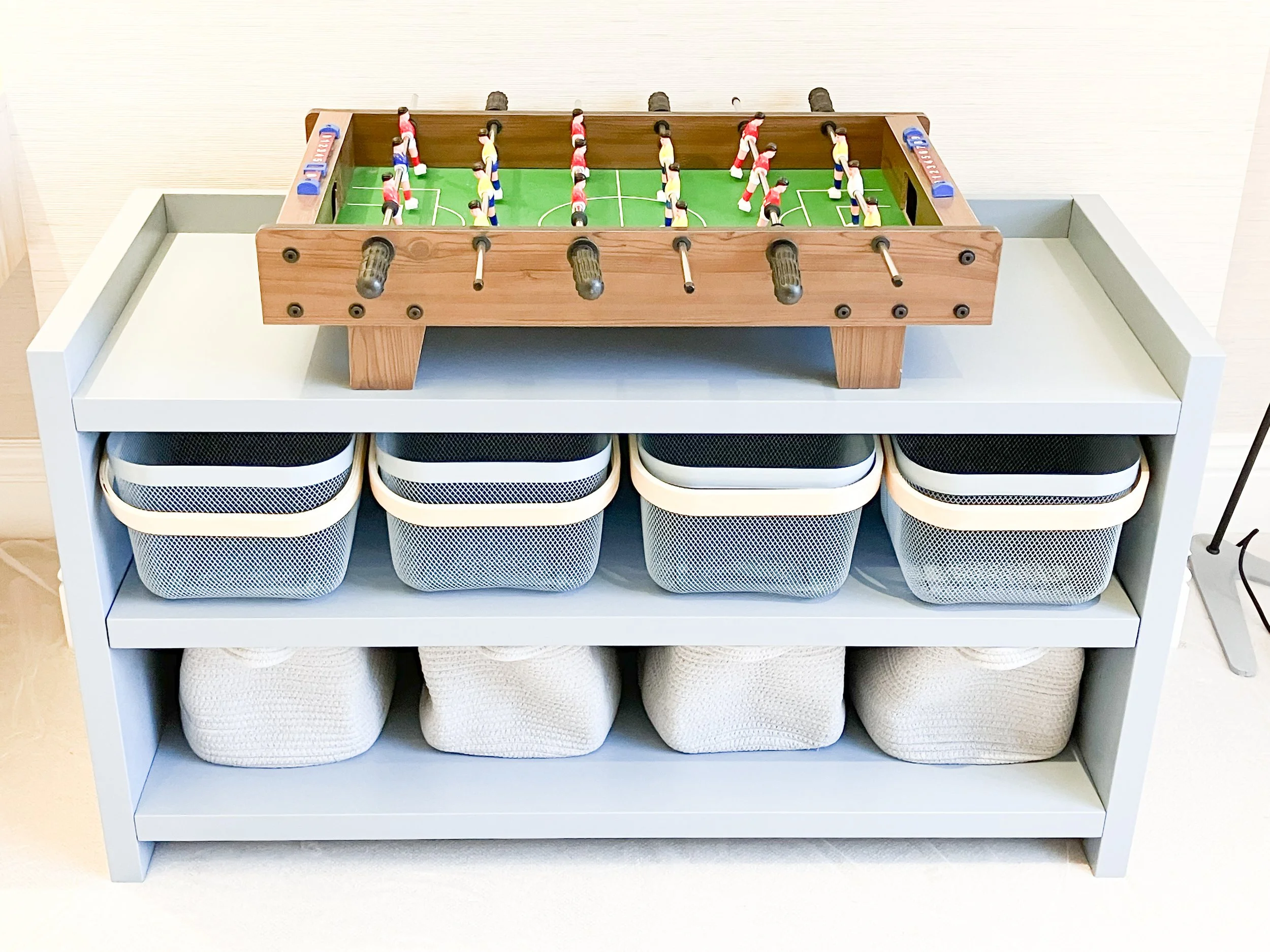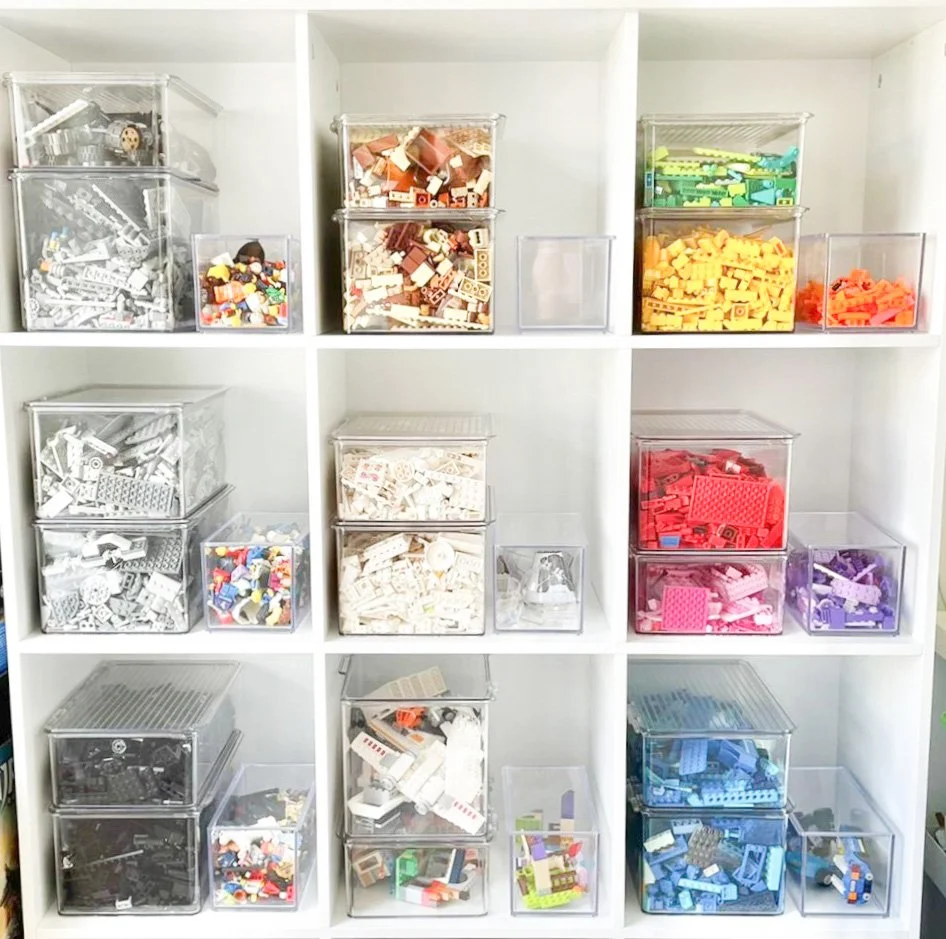12 Smart Playroom Storage Ideas That Kids Will Actually Use
Creating a functional, calm, and kid-friendly playroom can feel like a balancing act - especially when you’re managing toy clutter in a small space. But with the right systems in place, even the busiest playrooms can be transformed into beautiful, organised spaces that kids love and actually help keep tidy.
Whether you're dealing with a small corner in the living room or a dedicated play space, these 12 smart playroom storage ideas will help you declutter, calm the chaos, and make room for play (not piles). From clever hidden toy storage to practical children’s storage ideas, these playroom storage tips for small spaces are designed with real families in mind.
1. Choose Storage Kids Can Use Themselves
The best way to keep a playroom organised? Set it up so kids can help maintain it. Use low, open storage units like cube shelving or benches with baskets underneath so little ones can easily see and access their things. When children can find what they need (and put it back), tidying becomes a habit - not a battle.
Top tip: Label baskets and bins with pictures for younger kids or clear writing for older ones to encourage independence.
2. Think Vertically
When floor space is tight, go up! Wall-mounted shelves, hanging organisers, and vertical storage towers make the most of unused wall space and free up room for actual play. It’s an ideal solution for small playrooms, where every inch counts.
Try this: Use floating bookshelves or spice racks to display books front-facing - this looks beautiful and makes story time more inviting.
3. Rotate Toys for a Minimalist Feel
Too many toys can be overwhelming, both visually and for your child’s attention span. A toy rotation system keeps clutter down and supports a minimalist playroom setup. Store some items out of sight and swap them out every few weeks. This encourages more focused play and makes clean-up quicker.
Bonus: Rotating toys also allows you to quietly phase out things your child has outgrown, making decluttering toys easier over time.
4. Designate Zones for Different Activities
Just like a well-organised home, a tidy playroom benefits from clear zones. Create areas for imaginative play, quiet reading, crafts, or puzzles. Use rugs, furniture placement, or colour-coded bins to subtly mark each zone.
Having dedicated spaces makes it easier for kids to know where things belong - and makes a shared space feel calm and purposeful.
5. Use Hidden Toy Storage Wisely
Hidden toy storage isn’t just stylish - it’s practical. Ottomans with lids, built-in bench seating, under-bed drawers, and closed cupboards are great for stashing away less-used items or bulkier toys.
Pro tip: Avoid hiding everything - a mix of open and closed storage helps kids stay engaged with what they have without making a mess to find it.
Want help finding smart toy storage that works for your family? Explore our home organisation services to create functional systems for every corner of your home, including the playroom.
6. Invest in Multi-Functional Playroom Furniture
Choose furniture that does double duty. A bench with storage, a table with drawers, or a toy chest that doubles as a reading nook all help reduce clutter while making the room work harder.
When space is limited, playroom furniture that stores, seats and supports play is worth the investment.
7. Keep a "One In, One Out" Rule
To prevent clutter from creeping back in, establish a simple rule: for every new toy or book that comes in, one goes out. This teaches kids the value of their belongings and helps maintain a manageable number of items.
You can also involve your children in the process of letting go, helping them choose what to donate - an easy way to encourage empathy and a sense of ownership.
8. Create a Tidy-Up Routine That Works
Even the most beautifully organised playroom won’t stay that way without daily maintenance. But tidying doesn’t have to be a chore. Make it part of your family’s rhythm - before dinner, after bath, or at the end of the day.
Keep clean-up easy and fun with a simple system: quick sort bins, colour-coded baskets, or even a timer challenge.
9. Choose Clear Containers or Transparent Drawers
When it comes to managing toy clutter, what you can see, you can use. Clear storage bins make it easy to manage toy clutter and help kids (and grown-ups) to spot what’s inside - reducing the chances of everything being tipped out during a search.
Helpful hint: Stackable clear containers with labels work wonders for Lego, action figures, dolls and craft supplies.
Feeling overwhelmed by toy clutter? Our team at Homefulness specialises in decluttering to help you create systems that last, even in small spaces.
10. Keep the Floor as Clear as Possible
A tidy floor instantly makes a room feel calmer and more spacious. Wall hooks for dress-up clothes, under-table bins for toys, and wall-mounted baskets for soft toys can all help lift things off the ground.
Less floor clutter = more room to play. And for you? Fewer things to trip over at bedtime.
11. Curate, Don’t Just Contain
The goal isn’t to keep everything, it’s to keep what matters. Be intentional about what stays in your playroom. Ask yourself: Is it used? Is it loved? Is it age-appropriate? Then donate or store the rest.
This mindset of mindful decluttering helps create a space that’s not only tidy but truly enjoyable.
12. Set Up a Keepsake or “Memory” Box
Some toys and art projects hold sentimental value - and that’s okay. Rather than letting them pile up, set aside a special memory box or kids' memory folder for keepsakes. This helps distinguish between everyday items and treasured pieces, keeping clutter at bay without guilt.
Let your child help choose what goes into the box - it's a lovely way to honour their milestones while keeping their everyday environment clear and calm.
FAQs: Decluttering & Organising Kids' Playrooms
How do you store toys in a small playroom?
Use vertical space, opt for multi-functional furniture, and focus on a few well-organised zones. Regular toy rotations and clever storage (like hidden toy storage or under-bed bins) will help you maximise every square inch.
What is the best way to organise a playroom?
Organise by activity zones and use a mix of open and closed storage. Keep it simple and accessible so children can take responsibility for their space.
How do you keep a small playroom tidy?
Declutter regularly, rotate toys, and encourage a daily tidy-up routine. Systems that children can use independently are key.
How do you make a shared space feel calm?
Keep colours neutral and the layout functional. Declutter often, choose multi-use furniture, and contain categories (like crafts, dolls, and books) clearly.
Can a playroom be minimalist?
Absolutely. A minimalist playroom is focused on fewer, better toys - things your child truly enjoys. A pared-back space can encourage deeper, more imaginative play and is far easier to maintain.
Final Thoughts
Decluttering toys doesn’t mean taking the fun out of your child’s play space - in fact, the opposite is true. A well-organised, thoughtfully arranged playroom invites calm, creativity, and independence.
By introducing easy-to-follow systems, using smart playroom furniture, and embracing hidden toy storage solutions, you’ll create a space that both you and your child love spending time in. And when the playroom works, the rest of the house feels a little more peaceful too.
Need support creating a clutter-free playroom that truly works? Homefulness professional organisers help families set up systems that are not only beautiful but built to last - get in touch to find out how we can help.



